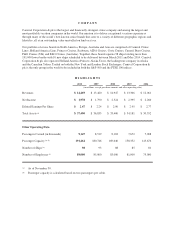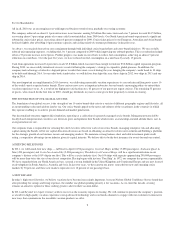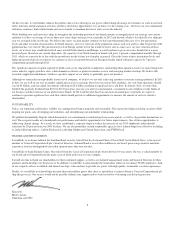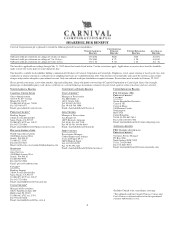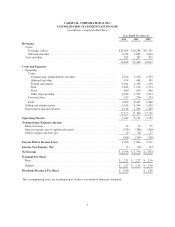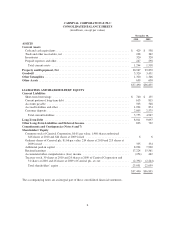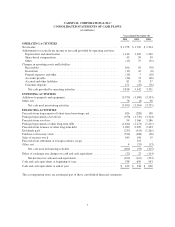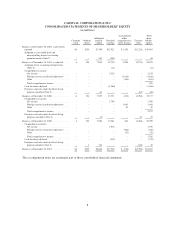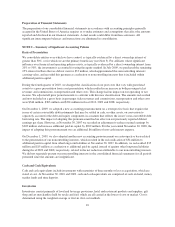Carnival Cruises 2010 Annual Report Download - page 12
Download and view the complete annual report
Please find page 12 of the 2010 Carnival Cruises annual report below. You can navigate through the pages in the report by either clicking on the pages listed below, or by using the keyword search tool below to find specific information within the annual report.
Property and Equipment
Property and equipment are stated at cost. Depreciation and amortization were computed using the straight-line
method over our estimates of average useful lives and residual values, as a percentage of original cost, as
follows:
Years
Residual
Values
Ships ........................................................ 30 15%
Ship improvements ............................................. 3-28 0% or 15%
Buildings and improvements ...................................... 5-35 0-10%
Computer hardware and software .................................. 3-7 0-10%
Transportation equipment and other ................................ 2-20 0-10%
Leasehold improvements, including port facilities ..................... Shorter of lease term
or related asset life
-
Ship improvement costs that we believe add value to our ships, such as those incurred for major refurbishments,
are capitalized to the ships and depreciated over their or the ships’ estimated remaining useful life, whichever is
shorter, while costs of repairs and maintenance, including minor improvement costs, are charged to expense as
incurred. We capitalize interest as part of acquiring ships and other capital projects during their construction
period. The specifically identified or estimated cost and accumulated depreciation of previously capitalized ship
components are written-off upon retirement, which may result in a loss on disposal that is classified within other
ship operating expenses in the accompanying Consolidated Statements of Income.
Dry-dock costs primarily represent planned major maintenance activities that are incurred when a ship is taken
out of service for scheduled maintenance. These costs are expensed as incurred and included within other ship
operating expenses in the accompanying Consolidated Statements of Income.
We review our long-lived assets for impairment whenever events or changes in circumstances indicate that the
carrying amounts of these assets may not be fully recoverable. The assessment of possible impairment is based
on our ability to recover the carrying value of our asset based on our estimate of its undiscounted future cash
flows. If these estimated undiscounted future cash flows are less than the carrying value of the asset, an
impairment charge is recognized for the excess, if any, of the asset’s carrying value over its estimated fair value.
Intangibles
We review our goodwill for impairment annually and, when events or circumstances dictate, more frequently. All
of our goodwill has been allocated to our reporting units, also referred to as “cruise brands”. Our goodwill
impairment reviews consist of a two-step process. The first step is to determine the fair value of the cruise brand
and compare it to the carrying value of the net assets allocated to the cruise brand. If this fair value exceeds the
carrying value no further analysis or goodwill write-down is required. The second step is required if the fair
value of the cruise brand is less than the carrying value of the net assets. In this step the estimated fair value of
the cruise brand is allocated to all the underlying assets and liabilities, including both recognized and
unrecognized tangible and intangible assets, based on their relative fair values. If necessary, goodwill is then
written-down to its implied fair value.
The costs of developing and maintaining our trademarks are expensed as incurred. Trademarks represent
substantially all of our other intangibles. For certain of our acquisitions we have allocated a portion of the
purchase prices to the acquiree’s identified trademarks. Trademarks are estimated to have an indefinite useful life
and, therefore, are not amortizable, but are reviewed for impairment annually and, when events or circumstances
dictate, more frequently. Our trademarks would be considered impaired if their carrying value exceeds their
estimated fair value.
11


